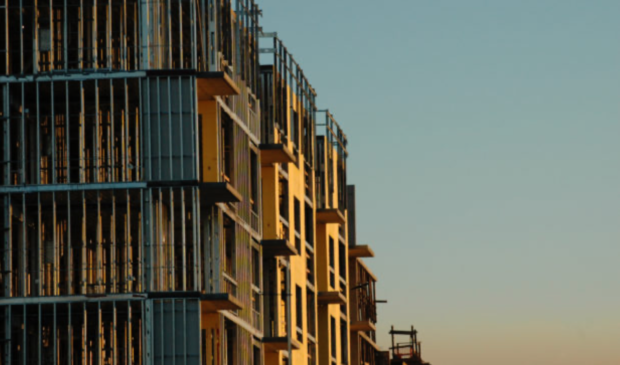City could reduce compatibility buffers to 75 feet to encourage new housing
Monday, September 18, 2023 by
Chad Swiatecki City staff has recommended the city end building compatibility height restrictions at 75 feet from single-family homes that for decades have had a barrier of several hundred feet from tall buildings.
That recommendation is one of nine included in a new memo to Mayor Kirk Watson and City Council from Rosie Truelove, director of the Housing Department, and Lauren Middleton-Pratt, director of the Planning Department.
The memo, released earlier this month, is a response to a June resolution from Council that directed staff to examine how ending or greatly relaxing compatibility standards could add housing stock throughout the city, and especially in desired areas near transit corridors.
The analysis found that adjusting the buffer around “triggering” single-family properties to 75 feet would allow for more than 71,000 new homes to be built as part of taller buildings that are currently restricted from construction due to the city’s compatibility requirements, which are among the strictest in the country.
Staff had previously considered setting the buffer at 100 feet, but that could’ve only netted 51,792 new homes, according to the analysis. It also found that peer cities around the country have an average buffer of 49 feet to allow a building of up to 60 feet in height, with 90 feet of height allowed for buildings outside of a 74-foot buffer.
Staff also recommended allowing further compatibility reductions for projects with on-site affordable housing, with density bonus programs seen as the best way to encourage the construction of more affordable housing.
The rollback of compatibility requirements is one of the city’s strongest moves toward meeting the goals of the 2017 Strategic Housing Blueprint that called for adding 135,000 housing units at varying levels of affordability by 2027.
The memo also calls for removing compatibility requirements for properties classified as SF-6, MF-1, MF-2 and MF-3, as well as refining the building heights that are allowed within the compatibility buffer.
Other possible actions the city could take include examining preservation strategies for existing multifamily housing, exploring ways to bring back displaced communities while minimizing displacement for vulnerable populations, and determining how other regulations such as watershed protections would impact the capacity for new housing.
The memo cautions that estimates such as the 71,000 potential new homes are something of a best-case scenario that could be reduced by a number of other factors.
It reads in part: “A housing capacity analysis is a simplistic projection of how many housing units could be built in a community if every property were to develop or redevelop under existing zoning regulations. Due to the complexity of zoning regulations, broad assumptions are always necessary to perform a citywide capacity analysis, which likely result in an overestimate of potential units. However, the primary purpose of this analysis is to demonstrate the impact of height variations between compatibility buffers and zoning districts while holding other factors steady.”
The June resolution was widely supported by Council, though Council Member Alison Alter pushed for explicitly incorporating density bonus programs and other considerations into the language to make them a more readily used tool to create more affordable housing. Her two proposed amendments to the resolution failed to win support.
Council Member Chito Vela, who led the resolution, said the development community is ready to create more housing once the city decides on the exact new standards around compatibility.
“I speak to both nonprofit and market-rate developers, and everybody identifies Austin’s compatibility rules as, uh, our number one barrier to housing,” he said at the June meeting. “We can take a 300-unit project, but because of compatibility rules it becomes a 220-unit project, and a 100-unit project becomes a 60-unit project. We kind of chip away at those individual developments with the compatibility rules that reduce our supply of housing and ultimately contributes to a tight housing market.”
Photo made available through a Creative Commons license.
The Austin Monitor’s work is made possible by donations from the community. Though our reporting covers donors from time to time, we are careful to keep business and editorial efforts separate while maintaining transparency. A complete list of donors is available here, and our code of ethics is explained here.
You're a community leader
And we’re honored you look to us for serious, in-depth news. You know a strong community needs local and dedicated watchdog reporting. We’re here for you and that won’t change. Now will you take the powerful next step and support our nonprofit news organization?









